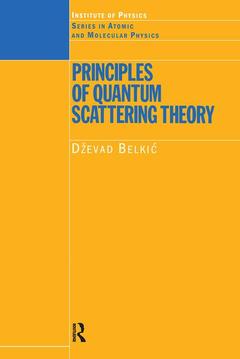Principles of Quantum Scattering Theory Series in Atomic Molecular Physics Series
Auteur : Belkic Dzevad

Scattering is one of the most powerful methods used to study the structure of matter, and many of the most important breakthroughs in physics have been made by means of scattering. Nearly a century has passed since the first investigations in this field, and the work undertaken since then has resulted in a rich literature encompassing both experimental and theoretical results.
In scattering, one customarily studies collisions among nuclear, sub-nuclear, atomic or molecular particles, and as these are intrinsically quantum systems, it is logical that quantum mechanics is used as the basis for modern scattering theory. In Principles of Quantum Scattering Theory, the author judiciously combines physical intuition and mathematical rigour to present various selected principles of quantum scattering theory. As always in physics, experiment should be used to ultimately validate physical and mathematical modelling, and the author presents a number of exemplary illustrations, comparing theoretical and experimental cross sections in a selection of major inelastic ion-atom collisions at high non-relativistic energies.
Quantum scattering theory, one of the most beautiful theories in physics, is also very rich in mathematics. Principles of Quantum Scattering Theory is intended primarily for graduate physics students, but also for non-specialist physicists for whom the clarity of exposition should aid comprehension of these mathematical complexities.
Date de parution : 12-2003
Ouvrage de 550 p.
15.6x23.4 cm
Thèmes de Principles of Quantum Scattering Theory :
Mots-clés :
Vice Versa; Quantum Scattering Theory; thomas; Thomas Double Scattering; double; Lippmann Schwinger Integral Equations; state; CB2; vectors; Differential Cross Sections; total; Wave Operator; cross; Double Scattering; section; Total Cross Section; exit; State Vectors; channel; Short Range Potential; peak; Single Charge Exchange; Kato conditions; Thomas Peak; Target Nucleus; double scatterings; Exit Channel; Dyson perturbation; Dynamic Electron Correlations; inelastic ion-atom collisions; Storage Ring; Ion Atom Collisions; Hilbert Space; Wave Packet; IA; Perturbation Expansion; Asymptotic Convergence; Correct Asymptotic Behaviour; Scattering State



